From quarter-mile slips to carving up corners, this wild Honda was redeveloped from straight-line assassination to speed and agility
Words and photos: Rixsta Sammons
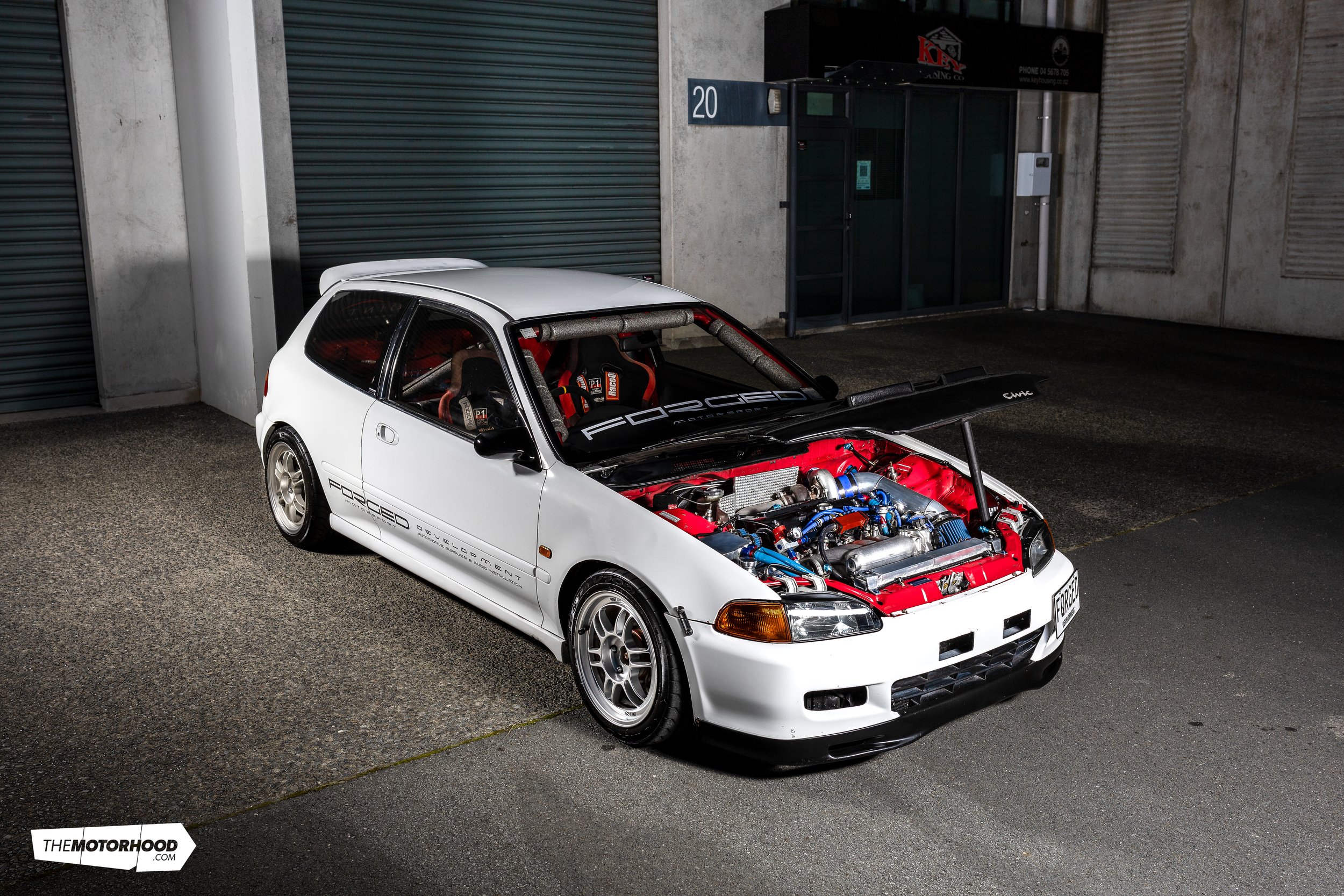
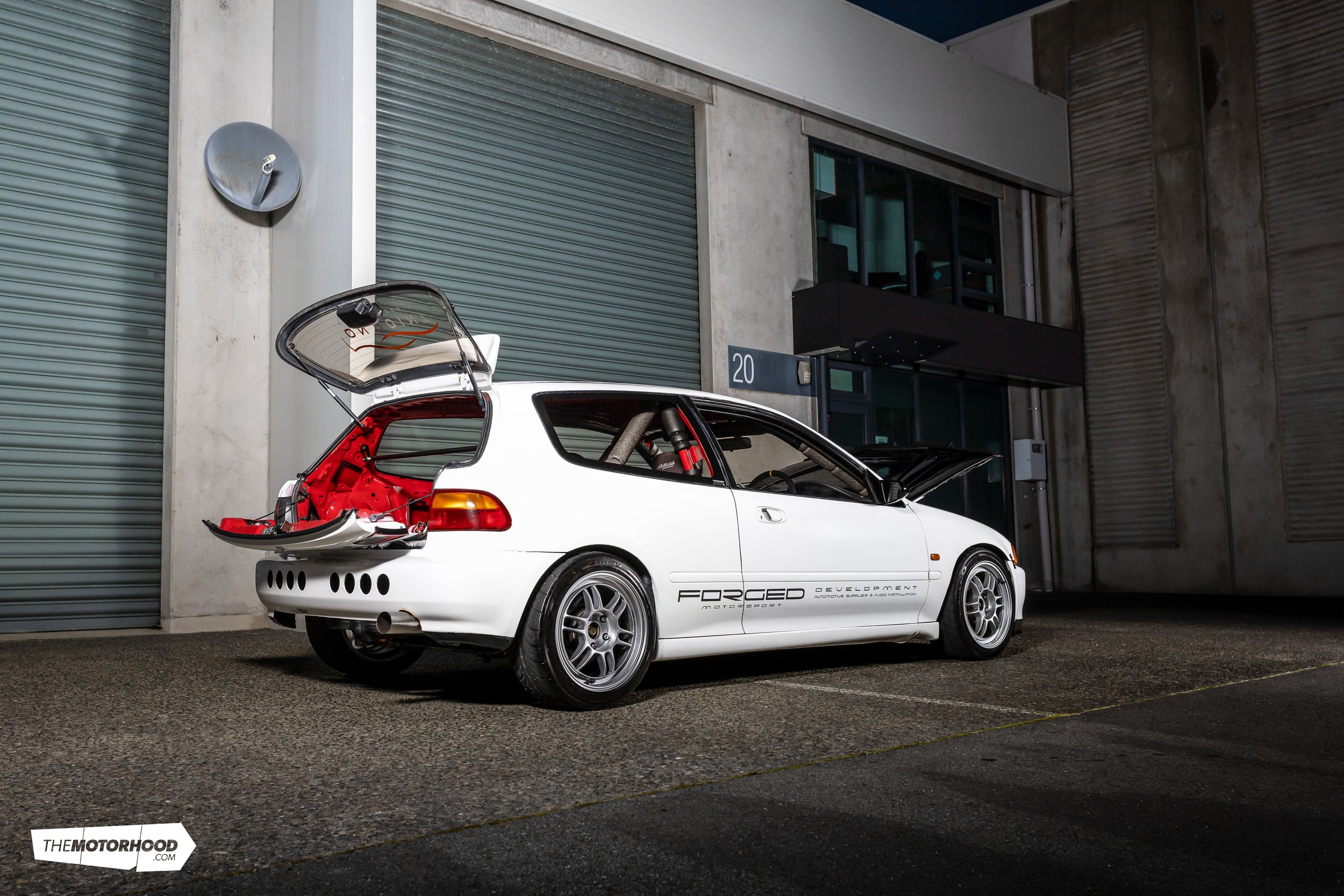
You might be thinking this car looks familiar — well, you might recall a drag-spec Honda Civic dubbed ‘PROJECT D’ back in issue 207. This car was originally built by the ‘Mad Professor’, aka Adam Plews, owner of Speed Science. Around 2013–2014 it was running passes in the 12-second range, which was relatively quick for a road-legal stock-block B18CR. Running straight and hard was its sole purpose. Later on, the engine was swapped out for the mighty K20A and turbocharged!
The car was then sold to Hayden Barnett and became known as KFED. It was packing some serious heat at that point, staying in the drag racing scene, having more performance improvements over time, and making faster passes each run. It had a healthy 314kW of K20A turbo power under its hood. However, due to unforeseen circumstances, Hayden had to move the car on.
For a short time, KFED was still in the drag scene but it had seen better days and required some TLC. The car was listed for sale on Trade Me, and that is where our story begins — we get to see its new lease of life. It had been five years since we last saw the car, in its previous life as a drag racing demon, but the tables had turned — it was about to run corners and hit apexes like no other.
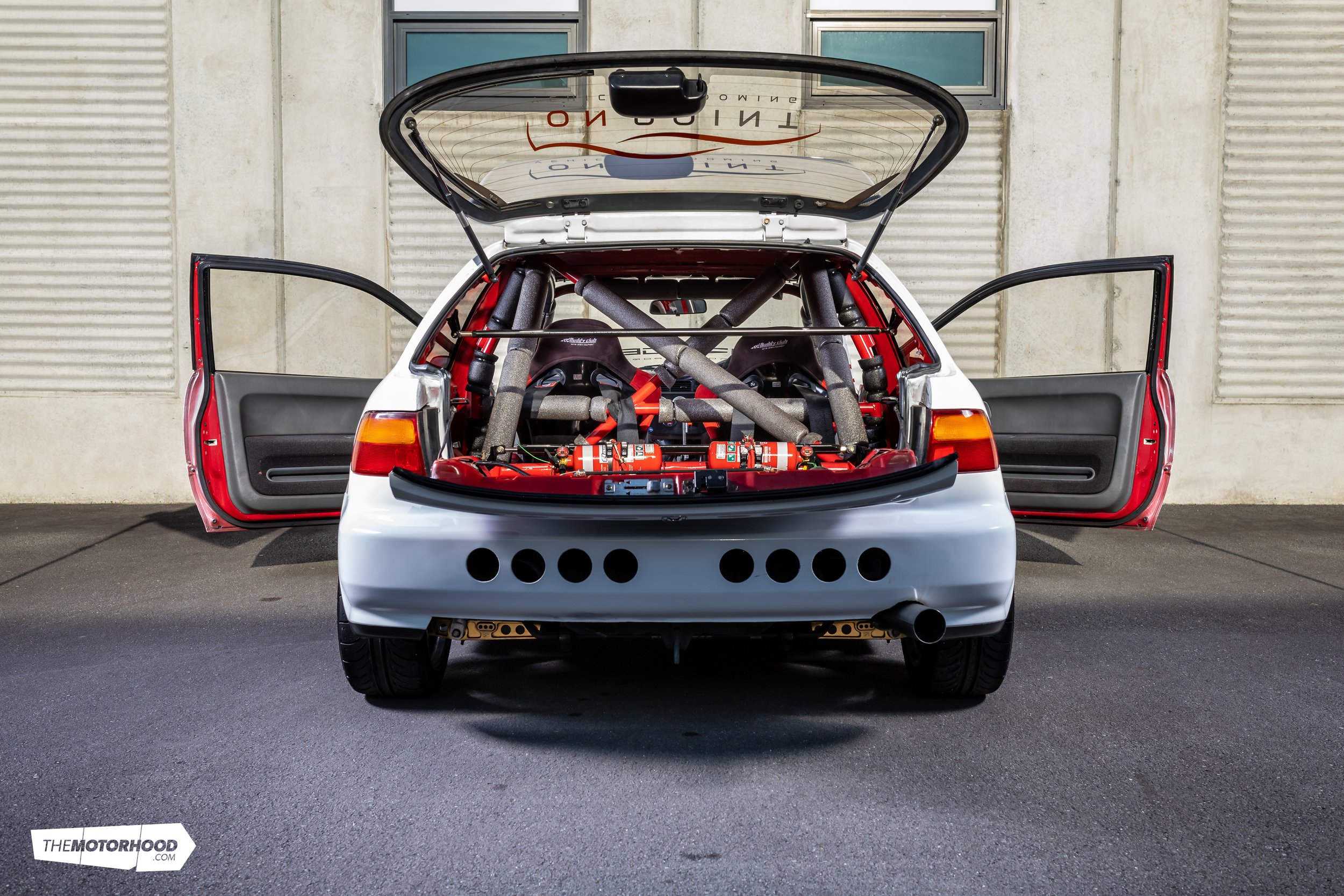

Sameer, owner of Wellington-based Forged Development, had seen the car for sale and thought it had potential. Sameer and his team are all about new life and new purpose, so he purchased the Honda dragster, not completely knowing what he was in for. The car spent its first two years with him as a test circuit car. Being a former drag car, it was a little untidy and needed a makeover to become the sort of race car Sameer planned. His intention was to redevelop the car into a high performance grip circuit car.
Sameer says, “A lot of work needed to be done to transform the car.” He questioned whether it was worth doing and wondered if it would be easier just to start with something better. However, a plan was put in place, overhauling everything that needed it and overlooking nothing. The car spent countless hours on the circuit, but more times on the trailer. “I kid you not,” Sameer tells us, “every time we would take it to the track, it would break something: clutches, suspension, driveshafts — you name it.”
Each time, it was loaded back up onto the trailer and taken back to the shop. Finding all its weak points was great, but frustrating at the same time. Research and development were key to the success, and with companies like Exactus on board to help with R&D it received some of the performance parts that circuit testing showed it needed. Some are borderline overengineered, but Sameer wanted the car to be reliable and corner like no other, with fast lap times.
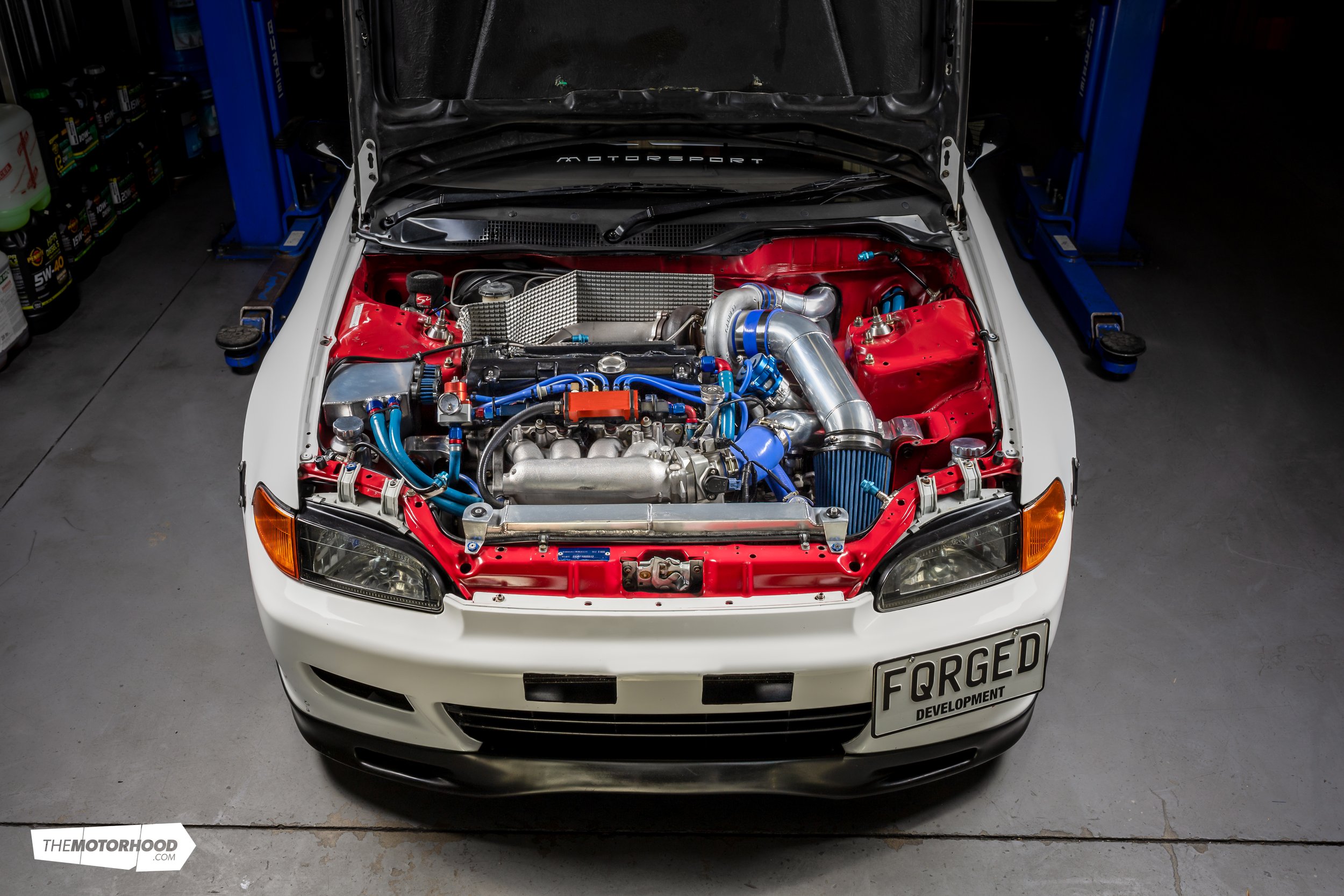
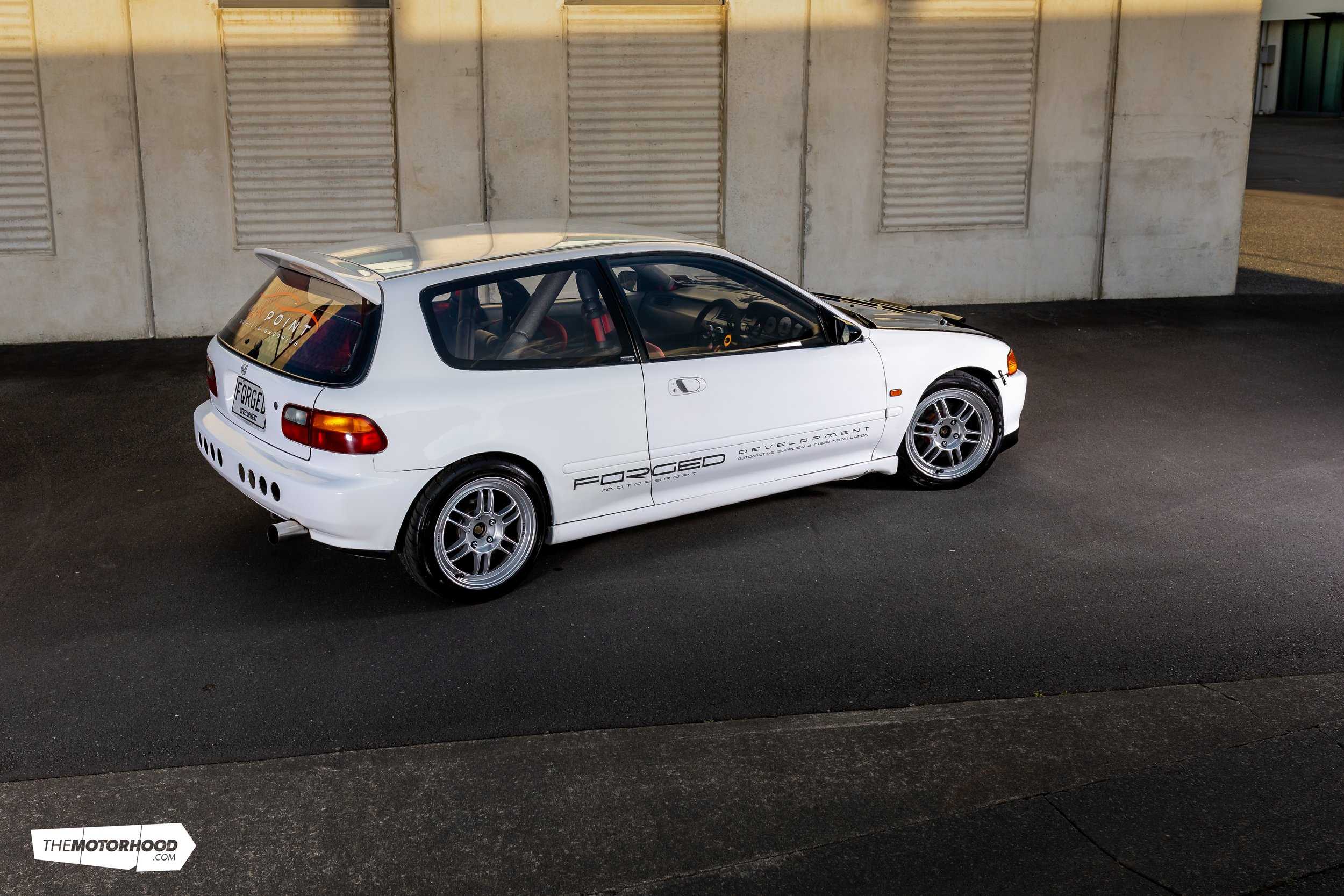
To start with, the K20A was stripped right down and received head work and a full rebuild of the block. Sameer doesn’t want to give away too much of his secret recipe, but it’s been FD-specced (Forged Development spec) as he calls it. As much as power is important for a circuit car, braking is equally important; circuit cars need to be brutal in braking, so choosing the Honda Integra DC5 Brembos up front, matched up with a set of Endless brake pads, made sure the braking control was spot on. Along with the issue of parts breaking on track days, another constant problem was the driveshafts. So, 1000hp driveshafts were put in place, replacing the OEM Honda items. Funnily enough, they haven’t broken since.
After fighting alignment issues throughout the entire build, the decision was made to put the Civic on a 3D chassis machine, to get the foundations right. This was how they discovered the car’s chassis was bent — explaining a great deal about why it had been fighting them for so long. With the Civic initially built for straight-line action, it’s something that wouldn’t have been picked up as easily in the past.
“I managed to fly back to New Zealand and took it to GT-R FWhen the car was purchased, it had a half-cage in place, which is mandatory for all vehicles at 9.99 seconds or quicker or any vehicle running 135mph or faster at the drag strip. At this point, the decision was made to install a much safer cage, with the old cage only just meeting the requirements for drag racing, and not providing the kind of safety and rigidity a newer cage could provide.

To aid in the rigidity and circuit-based performance of the Civic, the FD team decided to run Buddy Club circuit-spec coilovers, matched with underbody bracing, fender bracing, and a custom strut brace.
As much fun as motorsport is, it’s always a good idea to go overboard on safety — protecting yourself and your car. So when Sameer pointed out the FIA fire suppression lifeline he installed, it was reassuring to learn he wasn’t cutting corners. Equipped with a pull cord inside and outside the Civic, it’s a smart addition to any circuit build.
Hiral Patel, Sameer’s brother-in-law, who now owns the car, says, “I have pulled it once, and it works — it works really well!!” It was Hiral’s first time out on track. He picked up a lot of water off the track, and it blew onto the hot side of the turbo, creating a lot of steam. He thought it was a fire.

“I freaked out a little,” he says, “and ripped the lifeline.” When we turned up for the photo shoot and interview, it felt like a scene from a Tokyo underground car scene. We were greeted with an assortment of fast Hondas and other divine JDM cars with some tasteful modifications. A sense of family was felt within the headquarters of Forged Development.
Sameer’s idea of rebirthing a beaten dragster into a fire-breathing grip car chasing its prey with enough power to be competitive on the straights has now been achieved. Hiral, who works with Forged Development, continues to take the Civic to the circuit every chance he gets, with full support from the family at FD.
This car has lived many lives and has almost gone full circle. The Civic may look a little rough and ready these days, but one thing is for sure: it’s alive and still in the game. Where will it be in another 10 years’ time — will we see it return to its roots, or being bashed around one of New Zealand’s circuits repowered by something different yet again? Only time will tell, and that’s the beauty of modifying cars — it’s forever changing.

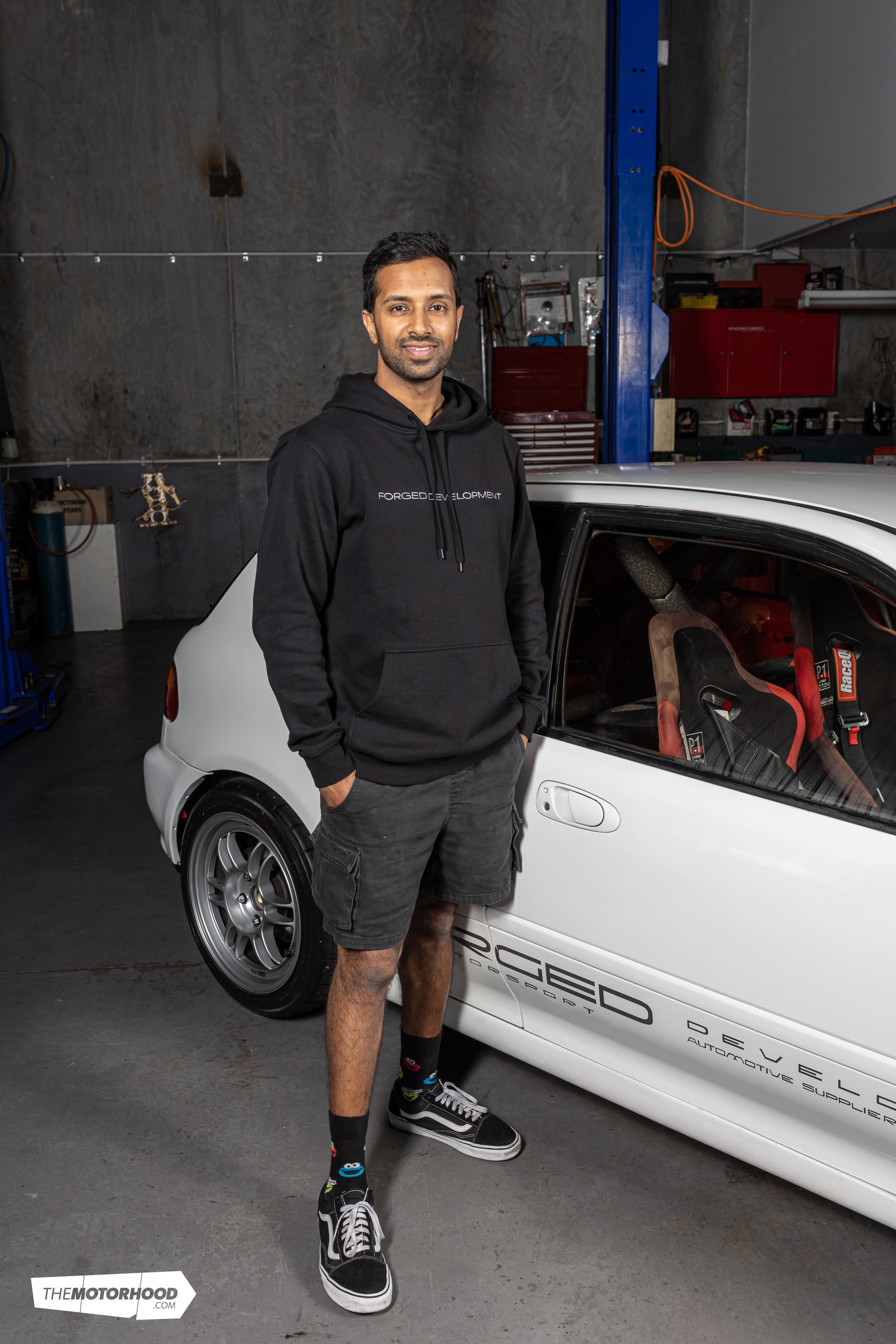
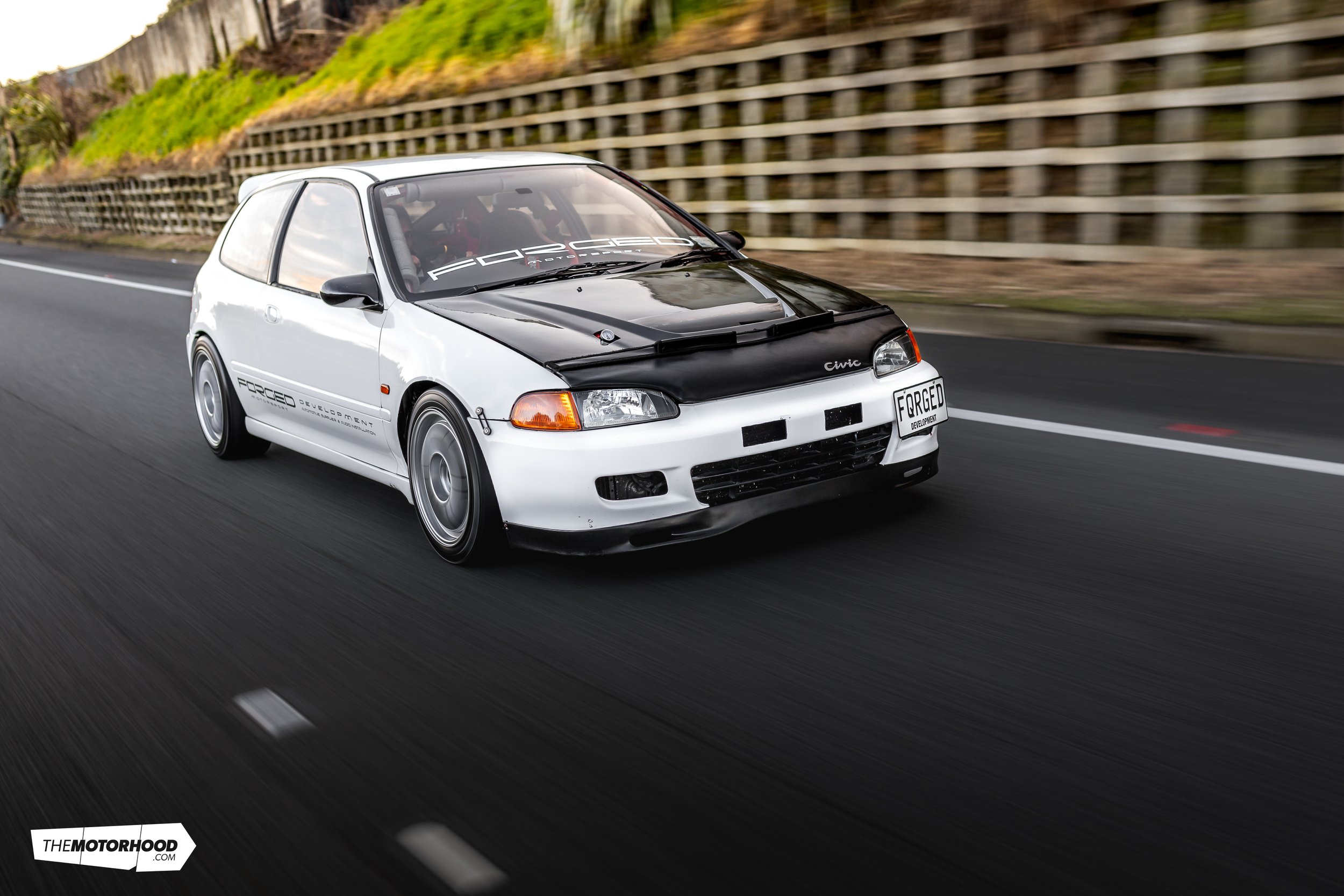
This article originally appeared in New Zealand Performance Car issue 293




